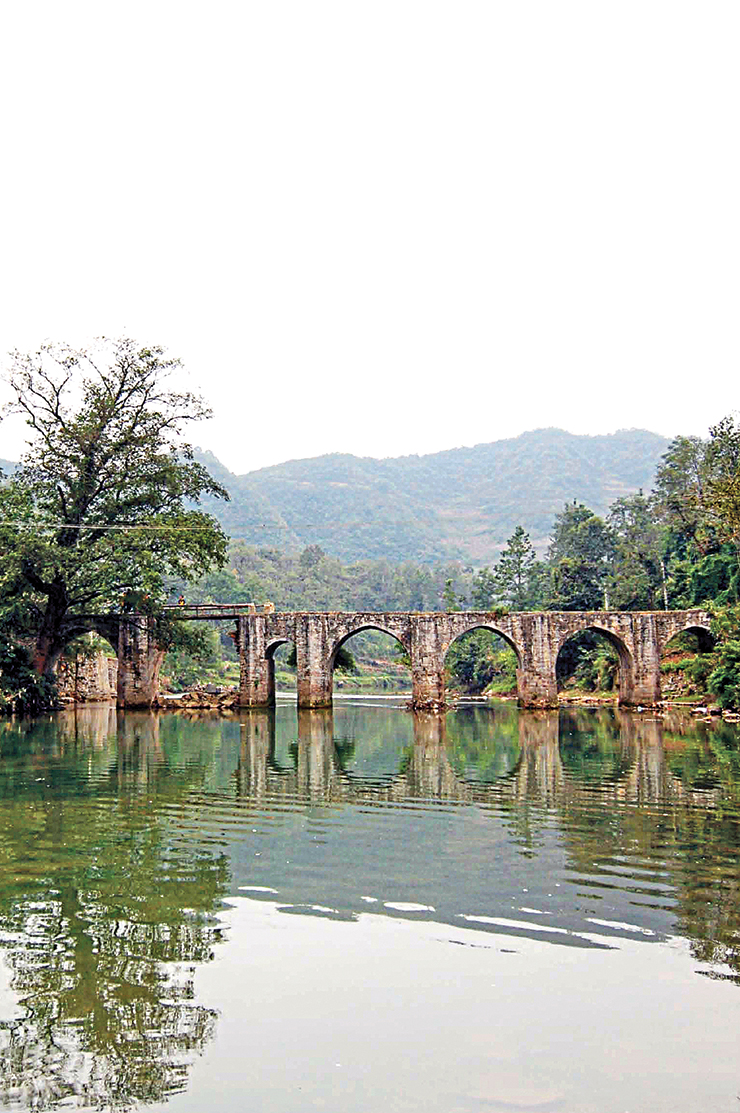
For the past decade, observers of architecture and planning in China have focused on the trials and triumphs of its cities, and for good reason. The successes and failures are staggering in both size and number.
Yet the root cause of China’s urban spectacles—the redistribution of people to cities—has also profoundly impacted its countryside. Villages have been gobbled up by expanded city limits, with some becoming oases of familiarity and others replaced by the generic redevelopment often seen in the background of those new structures. Where there remains a clear distinction between farmland and asphalt jungle, depopulation can cause declines in food production that threaten village and city alike.
This other side of the coin came palpably to light for Joshua Bolchover and John Lin in 2006, when the young architects traveled from Hong Kong to Qinmo, near the border of Guangdong and Guangxi Province, and witnessed the once agricultural Pearl River Delta in all stages of mutation. That year they founded Rural Urban Framework (RUF) to study the phenomenon and, Bolchover says, create solutions that enhance rural communities’ adaptation to continued change.

For the duo, versatility requires awareness. Perhaps the most dramatic example is the Jintai Village Reconstruction project, where 22 prototype houses boast fascinating geometries that are not at all the result of aesthetic whim. Rather, the green-roofed, zigzagging shapes were generated by parameters that included ground-floor open space (to accommodate pigs and chickens, as well as social interaction), natural topography and the maximizing of daylight and air. The project is located on the site of the 2008 Sichuan earthquake, which was partly rebuilt and destroyed again in 2010 from aftershocks and a landslide, so it almost goes without saying that RUF also created this project with considerable seismic forethought.

“Engaging with a range of complex urban issues and distilling them into an architectural object is the compelling aspect of our work,” Bolchover says of his and Lin’s brand of creativity. Indeed, the issues are inspiring for their sheer number. At Qinmo Village Primary School, for example, RUF prioritized long-term food security by designing an earthworks-style building whose roof serves as an educational garden for students, as well as renovating the old school into a community center that teaches urban farming and ecologically responsible homeownership. RUF has also tackled the stigma of rural identity, as its low-slung Shijia Village house prototype applies contemporary form and sustainable technology to the traditional courtyard residence.
Just as it treads on unheralded terrain, RUF diverts from a normal studio structure. It operates as a nonprofit based at the University of Hong Kong, where Lin and Bolchover are assistant professors, and provides design services to charities and non-governmental organizations working in China. “We did not want to be pure academics and always wanted to retain a form of practice,” says Bolchover. “We want to do good work in places often overlooked by the profession and the pressures of the commercial world.”

Embodying multiple alternatives can be, well, rough. A decade after launch, Bolchover admits that the villagers whom he and Lin treat as full-fledged collaborators are still slow to embrace them. Moreover, “the Chinese landscape retains that hodge-podge feel in which remnants of previous agricultural land stand side by side with factory dorms and construction sites.” Yet RUF is making headway, earning the imprimatur of the Curry Stone Design Prize last October and recently expanding into Mongolia. Perhaps the most encouraging sign of RUF’s positive impact comes from on high. Whereas in 2005 the Chinese government formalized urbanization as a demographic and economic strategy, more recently its Development Research Center has been championing new measures for protecting farmland and guaranteeing public services for rural migrants. While Bolchover and Lin will tell you they’re not in the business of political science, their work serves as a beautiful guidepost for policymakers’ newfound movement toward a more equitable future.




